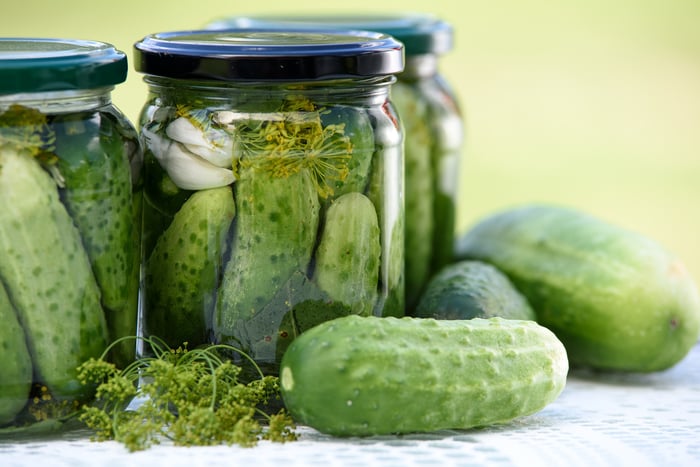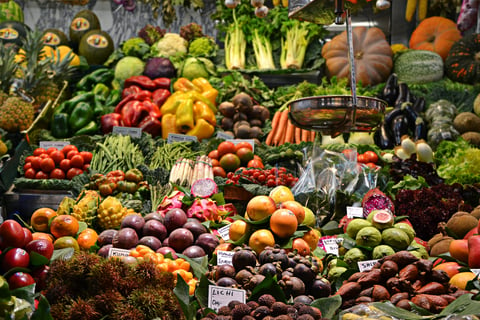Since prehistoric times, people all around the world have fermented food and drinks. Learn about how the processes behind your morning yoghurt or kimchi appetizer have become a cornerstone in food traditions and nutrition.
The advantages of fermented foods are numerous. Not only are they easier to digest, fermented foods that contain live bacteria (aka probiotics) can help to synthesize vitamins, extend shelf life, shorten cooking time, decrease food waste and replenish our intestinal bacteria. In 2015, the global probiotics dietary supplements market size was valued at a whopping USD 3.3 billion. Lucky for us, fermentation is the cheap and natural way to get our daily dose of probiotics.
WHY FERMENT FOODS?
Fermented foods and beverages have been consumed in societies across time and space – most of which were probably discovered by accident. In early civilizations, the transformation of foods ala fermentation was a miracle. There was little explanation for the striking, and sometimes welcomed, transformation. Fermentation was deemed an act of the gods; the Egyptians thanked Osiris for malt barley, the Greeks praised Bacchus for wine, the Japanese built shrines for their shoyu and miso breweries.

Our ancient ancestors found fermentation an effective way to preserve food, as the lactic acid or alcohol produced becomes natural preservatives that prevent other bacteria from growing. This way, even foods that spoil easily or are not in season can be preserved.
Unfortunately, most heat-sterilization and cooking methods (baking, frying, boiling etc.) will kill off the probiotics before they are consumed. Nevertheless, fermented foods are still healthy options because fermentation increases the availability and absorption of nutrients into the body. Today, their ubiquity makes them unavoidable – if you have drunk alcohol before, you have already consumed a beverage fermented using rice, barley, grape, sugar cane, or apples, you name it.

DOWN TO THE MOLECULAR LEVEL
Fermentation is the result of bacteria and yeast breaking down carbohydrates to produce carbon dioxide, lactic acid, and alcohol as byproducts. It is what gives champagne its fizz and pickles their tang. These microbes are found everywhere: the air we breathe, the food we ingest, even our saliva! Did you know some beers such as chicha de jora (chewed-corn beer) are fermented using human saliva?
We share our body with vast colonies of microbes like bacteria, virus, and fungi, much of which live in the digestive tract. The digestive tract is about 30 feet (9 meters) long in a fully developed adult and is host to trillions of microbes. If we want to reap the health benefits, an optimal balance of gut bacteria must be maintained by ingesting live bacteria in the form of probiotics (from fermented foods) and prebiotics (from dietary plant fiber).
What separates beneficial probiotics from pathological microbes is their ability to produce a range of bioactive compounds that are beneficial to our bodies. These microbes exchange information with the enteric nervous system (ENS – a part of the autonomous nervous system in the human body) connected to our guts, sending messages to the brain to regulate bodily functions. In fact, 90% of the body’s serotonin, also known as the feel-good hormone that regulates mood, appetite and health, is produced in the digestive tract. Research suggests that maintenance of a diverse and thriving population of beneficial gut bacteria not only protects a healthy mind but is also key to preventing and managing various ailments ranging from irritable bowel syndrome to mood disorders like depression. For more information on the link between fermented foods and mental health, check out this article.
So, here is a list of some of the most popular fermented foods that you can start eating today to keep your gut bacteria happy and healthy!
#1 Kimchi

Kimchi is the center of attention in many Korean foods. The kimchi mentioned at the beginning of this article is actually truer to the original form of fermented vegetable dish that appeared in the Koguryo Kingdom in 37BC-668 AD, characterized by radishes as the primary ingredient. Radishes were dipped and salted in various brines. Only later on were red peppers, cabbage, mushrooms, and bamboo shoots added. Today, over 200 varieties of kimchi exist.
#2 Sourdough Bread

Sourdough bread can be thought of as the original grain, dating back to Ancient Egypt. Until commercial yeasts were developed, all bread would have been sourdough due the longer raise time. A reason given for the importance of unleavened bread in Judaism is that during the exodus from Egypt, there wasn’t time to let the bread rise overnight.
#3 Kombucha

Kombucha has been around for at least a few centuries or even millennium. In China it has been called “Sea Treasure” (海寶), “Stomach Treasure” (胃寶) and “Sea Mushroom”(海蘑菇). From Asia, it arrived in Russia and Europe via the Silk Road. In Russian it’s affectionately called gribok (little mushroom) and allegedly saved Nobel Prize winner Alexsander Solzhenitsyn’s life while in exile in Siberia.
Notable Kombucha scholar and author Gunther Frank has published world-wide on the success of using Kombucha to treat gout, rheum, ateriosclerosis, arthritis, obesity, diabetes, cholesterol, cancer, etc. There is no shortage of ways to spice kombucha up. Use ginger or cranberries for a festive twist!
#4 Natto

Natto, a Japanese breakfast staple of fermented soybean, is the only plant source that delivers nattokinase, which improves the cardiovascular system. It is made by combining a bacterial starter with soybeans at 40˚C for 14-18 hours until the distinctive glossy substance covers it. It is said that the longer the threads are when natto is lifted (and they can stretch up to 8 feet), the better the natto. Natto is the only soy product fermented with just bacteria, without yeasts used in tempeh, tofu, or soy nuggets.
#5 Idli










